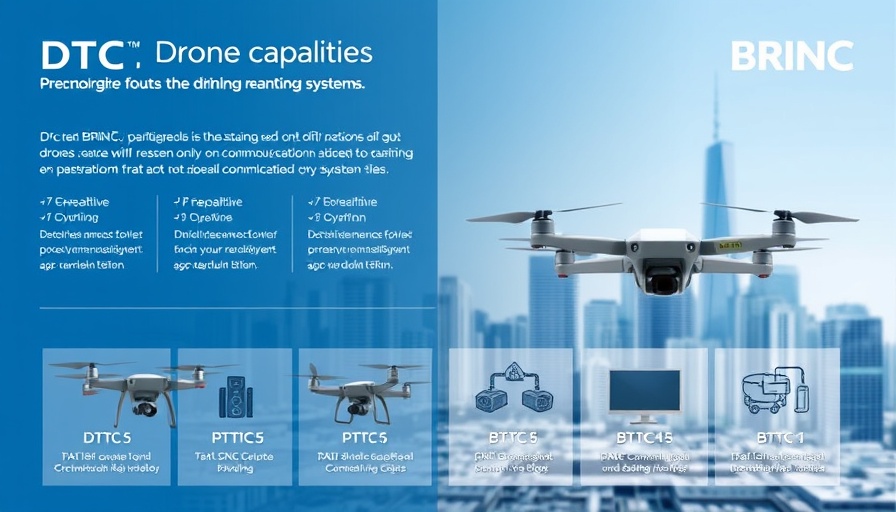
Unlocking New Possibilities: DTC and BRINC's Partnership
In a rapidly evolving landscape, the marriage of technology and drone capabilities has reached unprecedented heights. DTC, a leader in unmanned technology, has teamed up with BRINC to redefine what drones can achieve. By integrating DTC’s innovative meshed radio tech, the BluSDR family, with BRINC’s elite drone offerings, the partnership is set to enhance operational capabilities significantly. This collaboration enables crucial features such as relaying communications, extending range, and improving reliability. With these advancements, DTC and BRINC are not only pushing the boundaries of what’s possible but are also introducing real-world redundancy to unmanned systems, offering users a decisive advantage.
Revolutionizing Drone Operations in Real-Time
The capabilities offered by BRINC’s drones are particularly revolutionary in critical disaster response (DFR) operations. At NATIA 2025, attendees can witness firsthand DTC’s ground-breaking technology in action at booth #1119. The seamless integration of BRINC’s drones with DTC technology illustrates a significant leap forward for public safety personnel. By ensuring operational safety through enhanced drone capabilities, these innovations are transforming how emergency services respond to crises.
Anticipating Future Trends in Drone Technology
The ongoing advancements in drone technology signal what the future holds for various industries. As DTC and BRINC prove the value of their partnership, we may see an influx of drone applications across multiple sectors, including military, search and rescue, and real estate. The ability to relay communications even in challenging environments can optimize workflows, saving time and lives. Staying ahead of these developments is vital for professionals engaged in drone operations as they prepare for a tech-savvy future.
Counterarguments: Addressing Concerns in Drone Deployment
While the benefits of advanced drones are evident, discussions around privacy and security continue to emerge. Critics argue that the increasing use of drones in public domains could lead to invasive surveillance, presenting ethical dilemmas. Striking a balance between innovative technology and societal acceptance is essential. Engaging in community discussions and transparent policies can help alleviate concerns while advancing drone technology.
Take Action: Embrace the Future of Drone Technology
For tech enthusiasts and industry professionals, understanding the implications of DTC and BRINC’s innovations is crucial. By embracing these advancements, you can position yourself at the forefront of drone technology. Whether you’re a hobbyist or a professional, engaging with this evolving landscape can provide valuable insights and opportunities. Consider attending industry events, like NATIA 2025, to experience these advancements firsthand, and see how they can enhance your operations.
 Add Row
Add Row  Add
Add 




Write A Comment